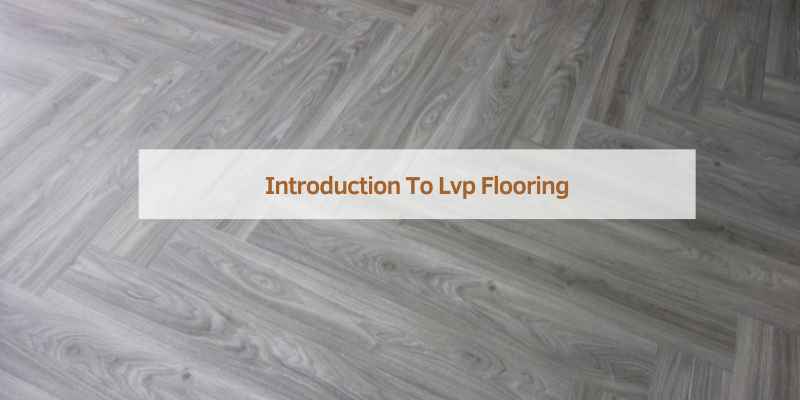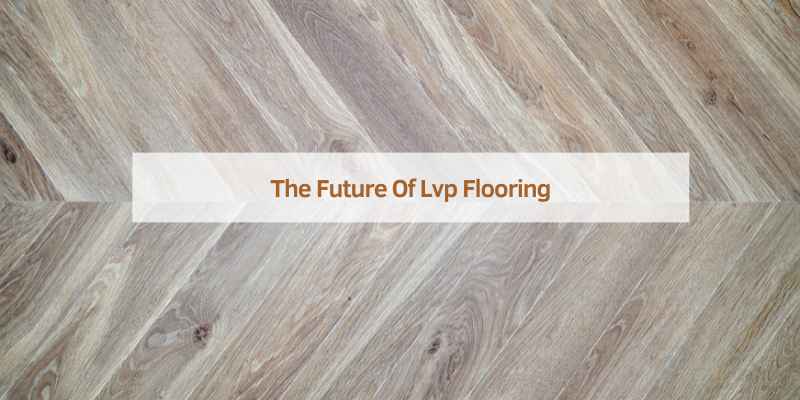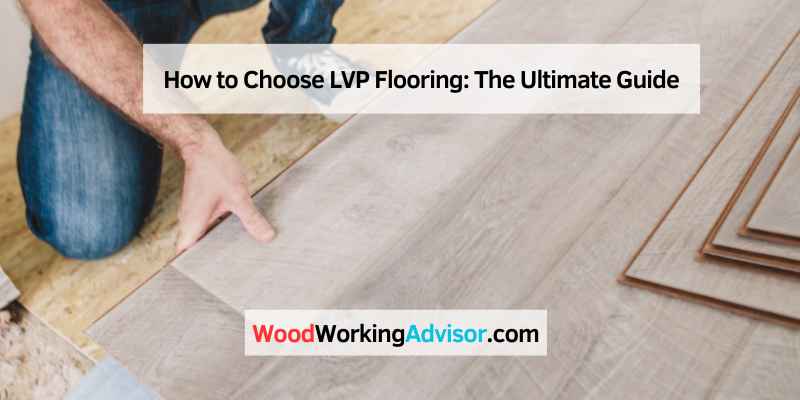Choose LVP flooring based on durability, style, and budget. Consider thickness, wear layer, and installation type.
Luxury Vinyl Plank (LVP) flooring offers a stylish and durable option for any home. It’s essential to evaluate key factors like thickness, wear layer, and installation type. Thicker planks often provide better durability and comfort underfoot. The wear layer protects against scratches and stains, so choose a thicker wear layer for high-traffic areas.
Various installation methods, such as click-lock or glue-down, can influence ease of installation and stability. Additionally, consider the design and texture to match your interior decor. By assessing these factors, you can select the best LVP flooring that meets your needs and enhances your home’s aesthetic appeal.
Introduction To Lvp Flooring
Luxury Vinyl Plank (LVP) flooring is very popular today. It looks like real wood but costs less. People love it because it is easy to clean. It is also water-resistant and durable. Kids and pets won’t damage it easily. LVP flooring comes in many colors and styles. You can find a design that fits your home. It is also simple to install. You can do it yourself and save money. This makes it a great choice for many families.
Many think LVP flooring is not real wood. This is true, but it looks like wood. Some believe it is not strong. LVP flooring is very durable. Others think it is hard to install. It is easy, even for beginners. Some say it looks cheap. High-quality LVP looks very nice. It can even add value to your home.

Decoding Lvp: Composition And Types
LVP stands for Luxury Vinyl Plank. It is a popular flooring choice. LVP is made of several layers. The top layer is a clear protective coating. Under it is a design layer. This layer gives the plank its look. The core layer is next. It adds stability and strength. Finally, the backing layer provides support. LVP is durable and water-resistant. It mimics wood or stone at a lower cost.
There are different types of LVP. Rigid Core LVP has a solid core. It is very tough and stable. Flexible LVP is softer and easier to cut. It can be installed over uneven surfaces. WPC (Wood Plastic Composite) LVP has a wood and plastic core. It is waterproof and comfortable. SPC (Stone Plastic Composite) LVP has a stone and plastic core. It is harder and more durable. Each type has its own benefits.
Factors To Consider Before Choosing Lvp
LVP flooring works well in many rooms. It is good for living rooms, kitchens, and bathrooms. It handles water and stains very well. Always check if the room is moisture-prone. LVP is a good choice for such rooms. Think about the room’s purpose and how it will look.
High-traffic areas need strong flooring. LVP is very durable. It can handle a lot of foot traffic. Busy homes with kids and pets need tough floors. LVP works great in these homes. Always check the wear layer thickness. Thicker layers mean more protection and longer life.
Design Aspects Of Lvp
Selecting the right LVP flooring involves considering texture, color, and plank size to match your interior design. Prioritize durability and ease of maintenance for long-lasting beauty.
Color And Pattern Selection
Choosing the right color and pattern is crucial. It can set the mood of your space. Bright colors can make a room feel larger. Dark colors add coziness and warmth. Patterns add visual interest. Wood-look patterns are popular for a classic feel. Stone-look patterns offer a modern touch. Consider the existing decor in your home. Make sure the LVP complements your furniture. Neutral colors are versatile and timeless. They match almost any decor style. Bold colors can make a statement. Choose what fits your taste and lifestyle.
Evaluating Lvp Quality
Selecting high-quality LVP flooring involves assessing its wear layer thickness, core construction, and visual appeal. Ensure durability by choosing options with a thicker wear layer.
Thickness And Wear Layer
Thickness is important for durability. Thicker LVP flooring lasts longer. Wear layer protects the floor from scratches. A thick wear layer means the floor will stay nice. Choose a wear layer of at least 20 mils for best results. Thicker wear layers are better for high-traffic areas.
Brand Reputation And Reviews
Brand reputation matters when choosing LVP flooring. Trusted brands use quality materials. Check customer reviews to see how others like the flooring. Good reviews mean the product is likely reliable. Avoid brands with many bad reviews.
Installation Essentials For Lvp
DIY installation saves money. You can enjoy a fun project. But it can take time. Mistakes might be costly. Professional installation costs more. But it ensures a perfect fit. Experts finish faster. You get peace of mind.
Tools you need: a tape measure, utility knife, spacers, and a rubber mallet. You also need a tapping block. Techniques include: measuring the room. Cut the planks to fit. Use spacers for gaps. Tap planks together. Ensure a snug fit.
Maintenance And Longevity
Regular sweeping keeps your LVP flooring clean. Use a soft-bristle broom. Vacuuming helps too but ensure it has a soft brush. Mopping should be done with a damp mop. Avoid soaking the floor with water. Mild cleaners are best for LVP. Avoid harsh chemicals. Wipe spills immediately to prevent stains.
Use furniture pads under chairs and tables. Avoid dragging heavy items across the floor. Trim your pet’s nails to reduce scratches. Place mats at entryways to catch dirt and debris. Keep shoes clean and avoid high heels. Regular maintenance ensures the longevity of your LVP flooring.
Budgeting For Lvp Flooring
Selecting the right LVP flooring involves considering your budget, desired style, and durability. Evaluate various options to find the best value for your investment.
Cost Comparison With Other Flooring
LVP flooring is often cheaper than hardwood. It costs less than natural stone tiles. It is also more affordable than ceramic tiles. Carpet can be cheaper but needs more care. Laminate flooring is close in price to LVP. Vinyl sheets are usually the cheapest but less durable.
Finding The Best Deals
Look for sales at local stores and online. Some stores offer discounts on bulk buys. You might find better prices during holiday sales. Clearance sections often have great deals. Don’t forget to check for coupons. Always compare prices from different sellers.
Environmental And Health Considerations
LVP flooring is often made from recycled materials. This reduces waste and helps the environment. Look for LVP that has low VOCs. Low VOCs mean fewer harmful chemicals. Some brands use sustainable practices. This means they care about the planet.
Good indoor air quality is important for health. LVP flooring can affect the air you breathe. Choose LVP with low emissions. Low emissions mean fewer pollutants in your home. This is better for you and your family.
The Future Of Lvp Flooring
Luxury Vinyl Plank (LVP) flooring is getting better. New technology makes it stronger and more beautiful. Waterproof LVP is now available. Scratch-resistant layers keep it looking new. Easy installation methods save time and money. Eco-friendly options are also rising. Recycled materials are being used more often. Smart LVP can even connect to your devices. These innovations make LVP a top choice for many homes.
LVP flooring trends are always changing. Natural wood looks are very popular. Gray and white tones are in style. Herringbone patterns are making a comeback. Wide planks give a modern feel. Textured surfaces add depth and character. Mixing and matching different styles is also trendy. Bold colors are starting to appear in more homes. LVP with built-in underlayment is becoming common. These trends show how versatile LVP can be.

Frequently Asked Questions
What Thickness Lvp Is Best?
The best thickness for luxury vinyl plank (LVP) is 5mm to 8mm. This range offers durability and comfort.
What Is The Best Quality Lvp?
The best quality LVP brands include Shaw, Coretec, and Mohawk. They offer durability, realistic designs, and waterproof features.
How To Pick The Right Color Lvp Flooring?
Choose a color that matches your decor. Consider room size, lighting, and style. Lighter shades make spaces look larger. Darker colors add warmth. Balance with furniture tones.
How To Pick The Right Vinyl Flooring?
To pick the right vinyl flooring, consider your budget, room usage, style preferences, durability needs, and ease of installation.
Conclusion
Selecting the perfect LVP flooring involves considering durability, style, and budget. By evaluating these factors, you can find the ideal option for your home. Prioritize quality and aesthetics to ensure a long-lasting, beautiful floor. With careful research and planning, your new LVP flooring will enhance your living space.

